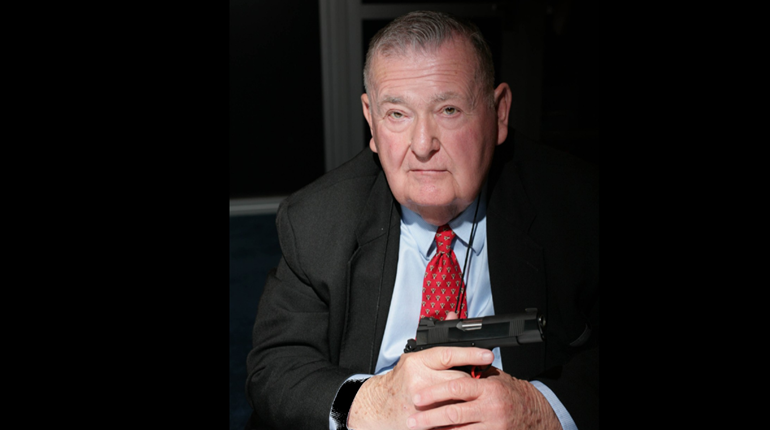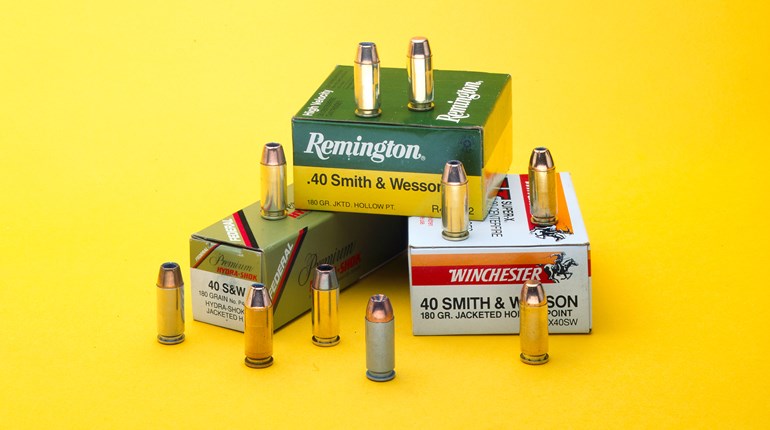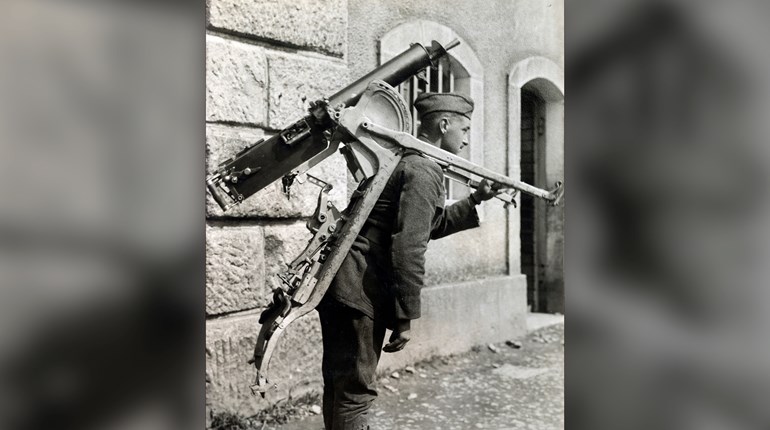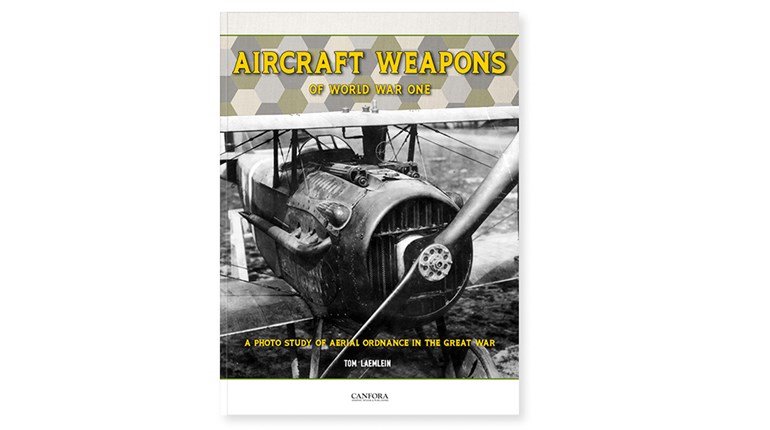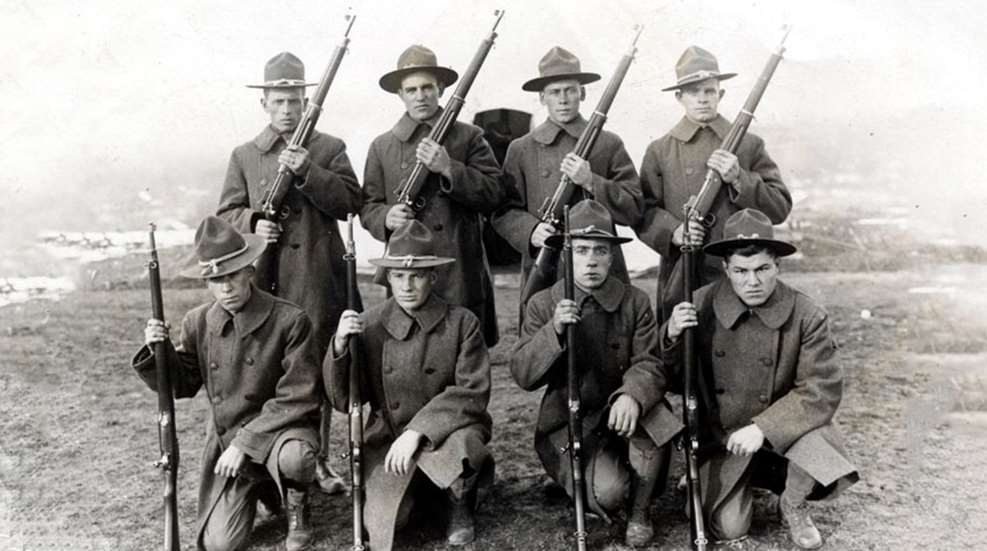
This article appeared originally as "Substitute Standard" in the Fightin' Iron column of the February 2017 issue of Shooting Illustrated.
As firearms go, the M1917 Enfield was not the handsomest ever issued to a U.S. Soldier. It’s true that no one ever guaranteed our guys were going to get good-looking guns, but that is exactly what happened at several points in history. The M1 Carbine—World War II’s “War Baby”—was a gun that just about everyone felt was a good one. The Colt Peacemaker of 1873 had a wonderful set of contours that evolved into the classic cowboy six-shooter. But the gun at hand was a military service rifle that wasn’t just good, but rather very good. Against its contemporaries—Mauser, Lee-Enfield, Arisaka, Ross, Mannlicher, Springfield—the M1917 Enfield rifle compared quite favorably. Although this lanky veteran had a distinguished service record, it was never regarded with the affection shown its service rifle brother, the beloved ’03 Springfield. And yes, I am looking back to days past and the bolt-action service rifles of the early 20th century.

This whole idea of building a firearm that looks good falls apart when it is military issue. Cosmetics have absolutely nothing to do with actual downrange performance and handling utility. If it works under adverse circumstances, what difference does the appearance make? Everything is relative to the circumstances of the arm’s use. It’s sort of like the ignoble Jeep. There’s no grace or style to this old World War II innovation—it’s plain ugly. That is, until you find yourself afoot in the Sahara, at which point it becomes a Ferrari Dino. It was thus with the M1917 Enfield, a rifle right on the cusp of modernity when developed in the United Kingdom just before the Great War. It also armed more U.S. doughboys than the American-built ’03 Springfield. It’s time we took a look.
In the first decades of the 20th century, the United Kingdom was armed with the Lee-Enfield and its blackpowder ammunition. They were aware of developments in smokeless powder and high-velocity ammunition. Most of all, the United Kingdom wanted to outfit its infantry with something akin to the ’98 Mauser and its rimless, high-velocity cartridge. The old Lee-Enfield was a rugged brute, although rather dated. Therefore, the Ordnance designers at the Enfield arsenal came up with an all-new rifle, which was named the Pattern 14 (for 1914, the year the war began). Initially, it was planned to introduce an all-new rimless cartridge in the smaller .276 caliber to pair with the new rifle. It never happened, as the British decided to stay with the rimmed .303. That old round was in use until well after World War II.
The year 1914 saw the beginning of the biggest war in human history—until the next one came along. Great Britain could not make enough rifles to arm its troops and came to the American arms industry for help. Three plants produced Pattern 14 Enfield rifles for the British: Winchester, Remington and a Remington subsidiary in Eddystone, PA. By 1917, it was apparent that the United States was also going to be involved in the European war and also needed rifles. The primary American rifle was the much-favored ’03 Springfield, but the industry could not make enough of them. You guessed it—the three plants were able to rather quickly convert to making a version of the Enfield chambered for our rimless .30-caliber service cartridge. In civilian guise, that cartridge was known as the .30-’06 Sprg. Generations of Americans fired that round in anger. From ’03s, ’17s, BARs, M1 Garands, and millions of John Browning’s machine guns, that turn-of-the-century cartridge worked well.
And the M1917 Enfield rifle? The three factories in the U.S. built 2,193,429 rifles in a relatively short period of time. There must have been bumps and starts along the way, but American industry just plain got it done. The result was a huge American Expeditionary force armed with high-quality rifles. At the end of the conflict, it was estimated that only one Yankee infantryman in four had the ’03 Springfield. The rest carried British-designed, American-made M1917 Enfields.
It was a good infantry rifle for the period. Designers included long barrels for the perceived ballistic efficiency of that era. With the new powders, rifles did not really need them, but the Enfield had a full 26-inch tube. It extended the range of the long bayonet, which was considered a serious weapon. In fact, the so-called “sword” bayonet was customarily attached to the rifle whenever close combat was imminent—and that was often. The M1917 Enfield featured a long, Mauser-style action that was capable of handling cartridges longer than the .30-’06 Sprg. It had forward-locking lugs on the bolt and an action that cocked on the closing , a much-criticized point, as were the sights. Today, fighting with a bolt-action rifle seems archaic, but back then they were state-of-the-art.
Hundreds of thousands of the old rifles went into storage after The Great War and were put back in service when a new war came to America in 1941. The action was strong enough that many custom rifles were built on Enfield actions. Post-war-era issues of The American Rifleman often had articles on how to customize and modify the old warhorse. Not long ago I was admiring an old M1917 Enfield, right next to the Krag Springfield, Garand and other legendary service rifles. The craftsmanship was as good or better than most modern-sporting rifles. It may have once been designated as “substitute standard,” but it is a fine hunk of fightin’ iron.












